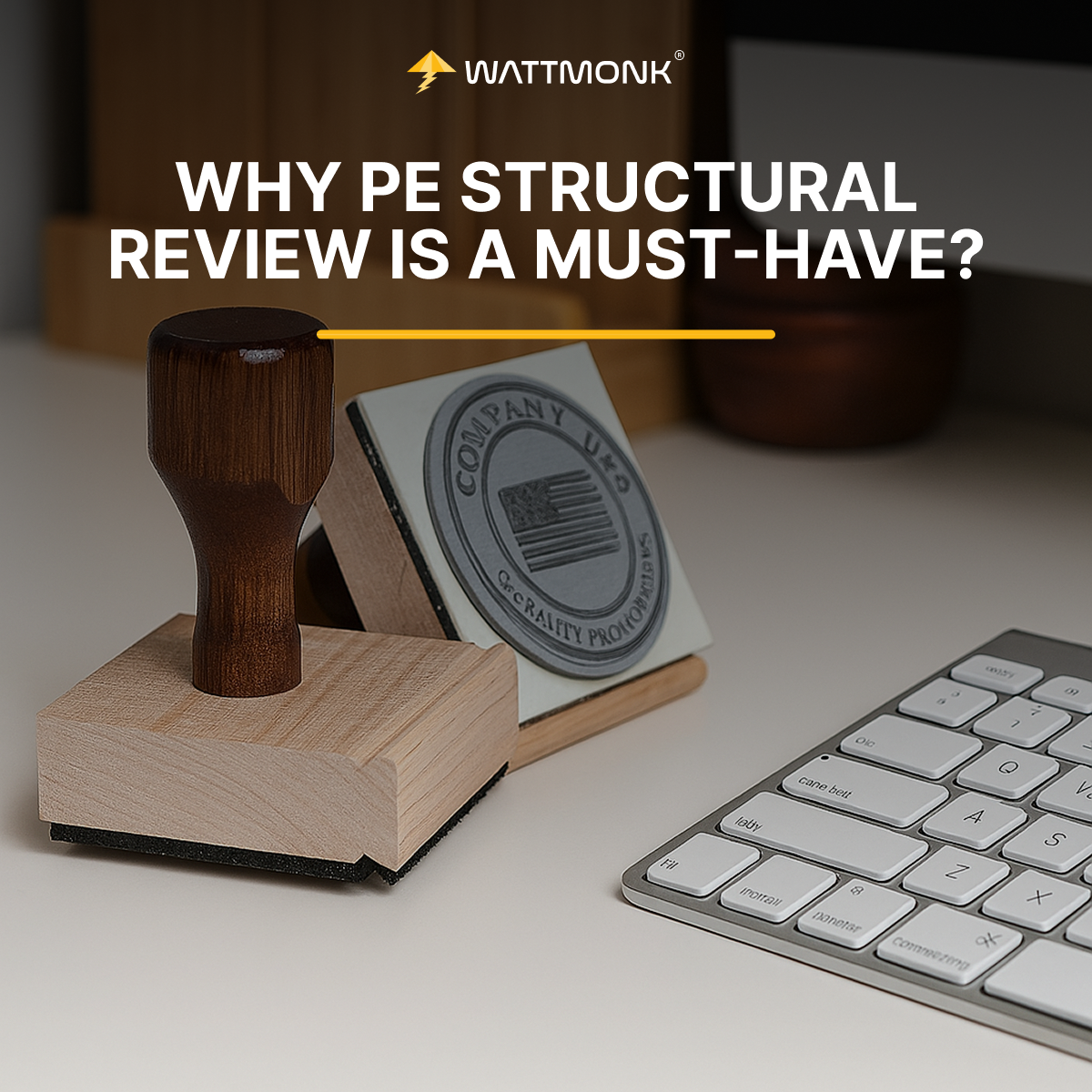You’ve finalized the design. The panels are sized. The roof is ready. But right before your project can move forward—you hit a roadblock: “We need a Professional Engineer stamp.” Sounds familiar?
For solar professionals, this request is often the key to unlocking faster permits, smoother utility approvals, and total peace of mind.
Whether you’re a homeowner installing your first rooftop system or a solar installer handling dozens of residential or commercial projects, the PE structural review plays a pivotal role in the success (and safety) of your installation. But what exactly is it, and why does it matter so much?
What Is a PE Review?
A PE review is a formal evaluation of your solar project’s design, conducted by a licensed Professional Engineer (PE). The outcome? A stamped and sealed plan set that confirms your system meets the structural and electrical safety standards required by your local Authority Having Jurisdiction (AHJ).
There are typically two main parts to this review:
Structural engineering review: Ensures your roof can safely support the weight of the solar panels, racking, and environmental loads like wind or snow.
Electrical engineering review: Verifies that your system’s wiring, grounding, and disconnects comply with NEC codes and local utility standards.
When stamped by a licensed PE, the reviewed plan set signals to building departments and utilities that your design is safe, code-compliant, and professionally validated. Without it, your permit could be delayed—or denied.
Who Needs It & When?
If you’ve ever wondered whether a PE structural review is truly necessary for your solar project—the answer depends on a few key factors: the project type, local building authority requirements, and the system’s complexity. For every installation it’s different, here’s how:
1. Residential Installations
Most simple rooftop residential systems don’t require PE structural review by default. However, you may still need one if:
Your roof shows structural concerns (e.g., older homes, visible wear).
The system adds significant weight to the structure.
Your AHJ has strict permitting rules—some cities and counties mandate PE structural review no matter what.
2. Commercial & Large-Scale Projects
PE stamping is nearly always required here. Larger arrays mean higher wind uplift risks and heavier equipment loads. Building departments want assurance that the mounting system and roof structure can handle it.
3. Ground-Mounted Systems
These may not need a structural PE review—but they still require an electrical one. Especially if you’re connecting to a utility or applying for net metering.
Core Components of PE Structural Review Process
Getting a PE structural review isn’t just about slapping a signature on your plan set. It’s about ensuring every element of your solar system is safe, code-compliant, and built to last. The review process typically covers four key areas:
1. Structural Review: Can Your Roof Handle the Load?
The engineer first assesses whether your roof can safely support the added weight of the solar panels, racking, and mounting hardware. They also account for:
Wind load: Can the system withstand regional wind speeds?
Snow load: In colder regions, is the weight of snow accounted for?
Roof age and framing: Are the rafters or trusses structurally sound?
2. Electrical Engineering Review: Safety in Every Circuit
The PE electrical reviews your electrical diagram to ensure:
Grounding, conduit sizing, and overcurrent protection follow NEC standards.
Disconnects are properly placed and labeled.
The design meets utility interconnection requirements.
3. Plan Set Validation: Are the Drawings Permit-Ready?
Even well-designed systems can face permitting issues if the plan sets aren’t clear or complete. The engineer checks for:
Consistent formatting and labeling.
Correct placement of panels, inverters, and racking.
Alignment with structural and electrical code references.
A clean, validated plan set makes AHJ approvals quicker and less frustrating.
Benefits of a Thorough PE Structural Review
At first glance, getting a PE structural review might feel like just another step between you and project approval. But in reality, this one stamp can unlock a smoother, safer, and more successful solar installation—especially when it’s done right. Here’s how:
1. Faster Permit Approvals
AHJs love clean, compliant plans. When a licensed PE signs off on your project, it tells the permitting authority: “This system checks out—no need for a second guess.”
That often means:
Fewer review comments
Reduced revision cycles
Quicker green lights to build
2. Fewer Costly Redesigns
One of the biggest hidden expenses in solar projects? Having to redo your plan set after a failed permit attempt. A thorough PE structural review helps you catch issues before submission, not after. That means:
No rushing back to rework structural details
No missed NEC code violations
No surprise change orders midway through the install
3. Safer, More Durable Installations
Engineered plans are built to last. PE-stamped designs consider wind uplift, structural fatigue, and snow loads specific to your project location. That translates into:
Less long-term maintenance
Reduced risk of system failures
Greater homeowner satisfaction
4. More Credibility with Clients & Utilities
For homeowners and commercial clients alike, a stamped design gives confidence that the system isn’t just functional—it’s professionally validated. It also builds trust with utilities during the interconnection process.
Wrapping Up
A PE structural review confirms that your solar design meets safety standards and local codes. It’s often required for permitting and helps prevent project delays, rework, or failed inspections.
It also reduces liability, ensures long-term system performance, and gives both installers and property owners confidence in the final design.
For faster approvals and professionally reviewed plan sets, Wattmonk offers PE structural and electrical reviews that align with AHJ expectations—so your projects move forward without unnecessary back-and-forth.


